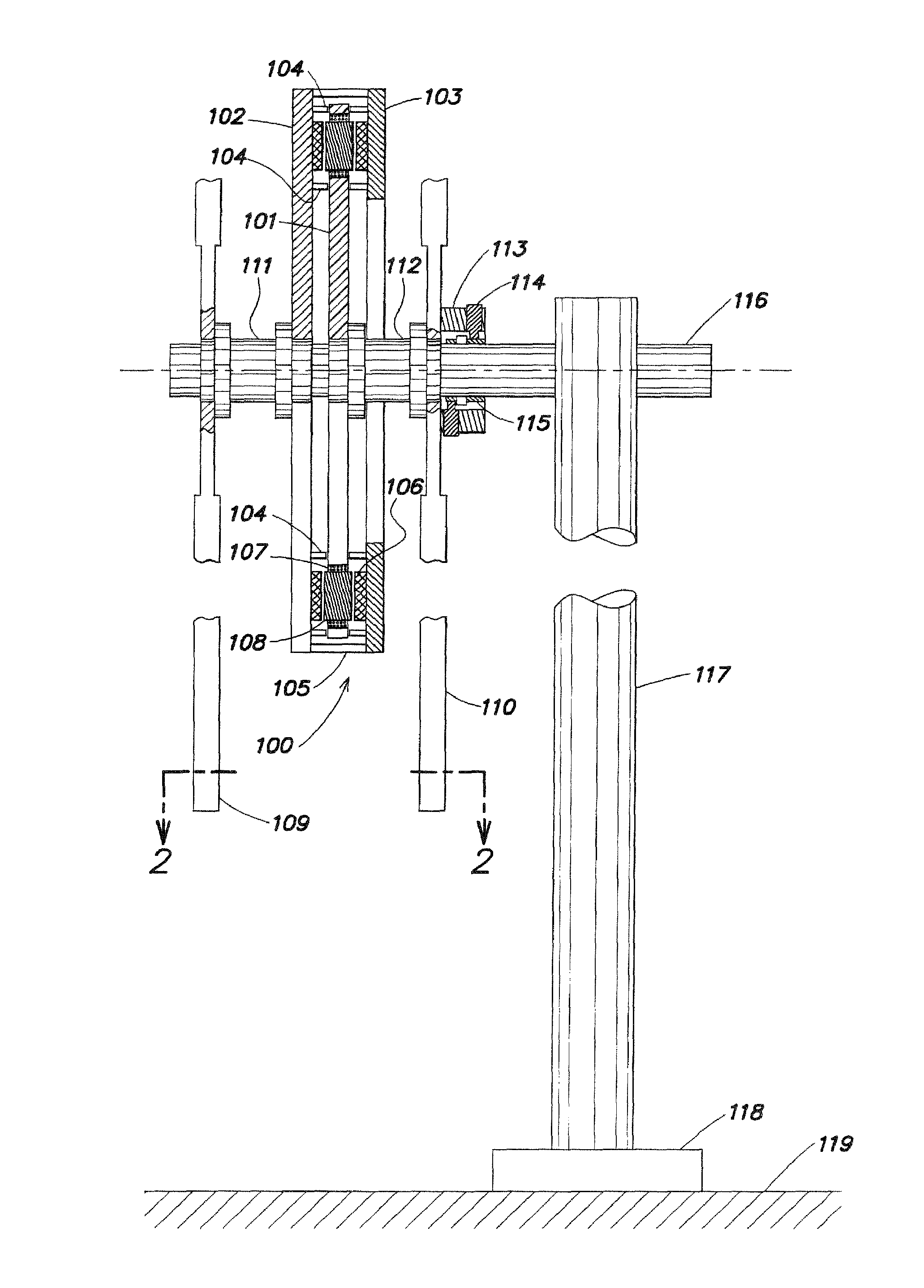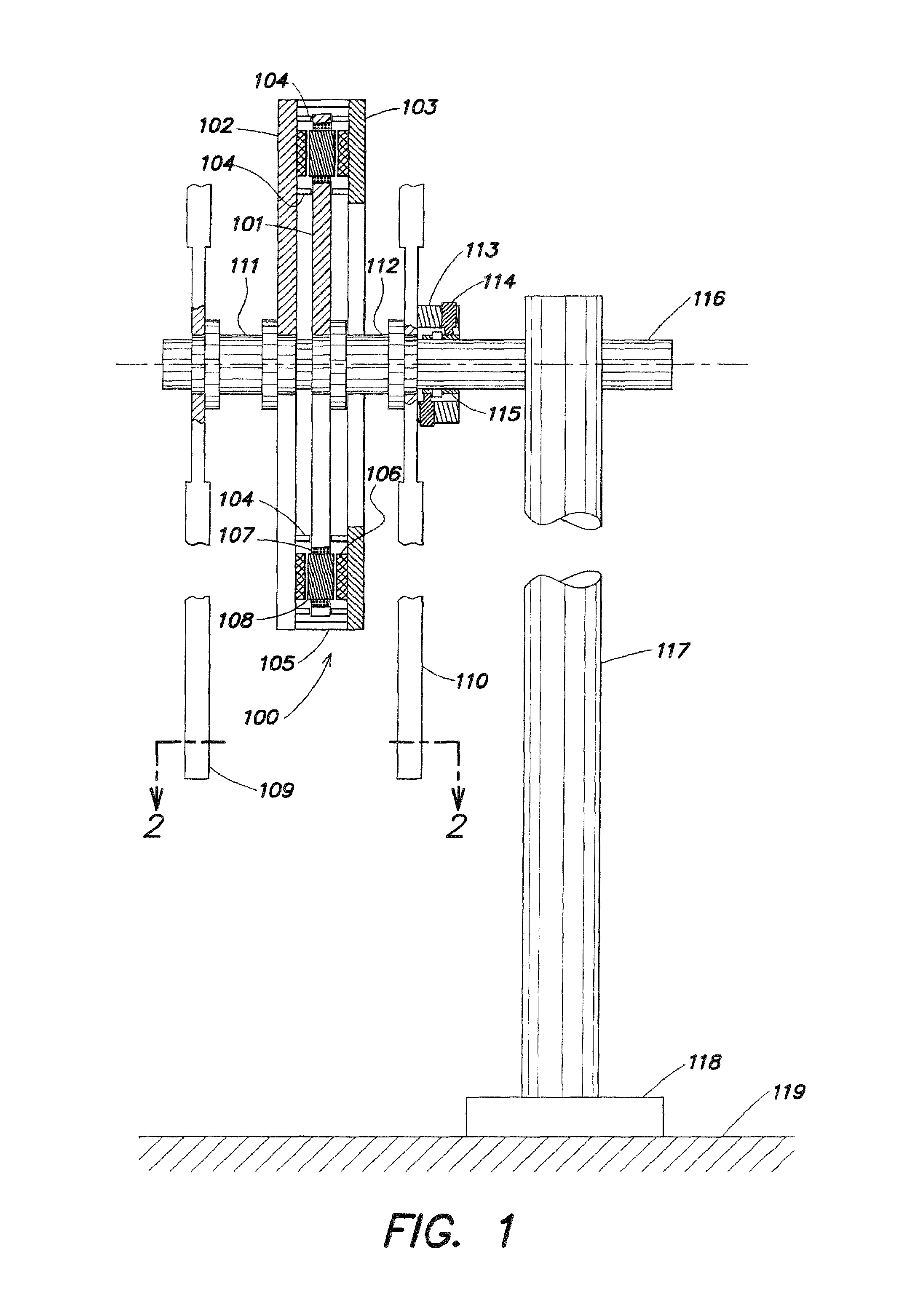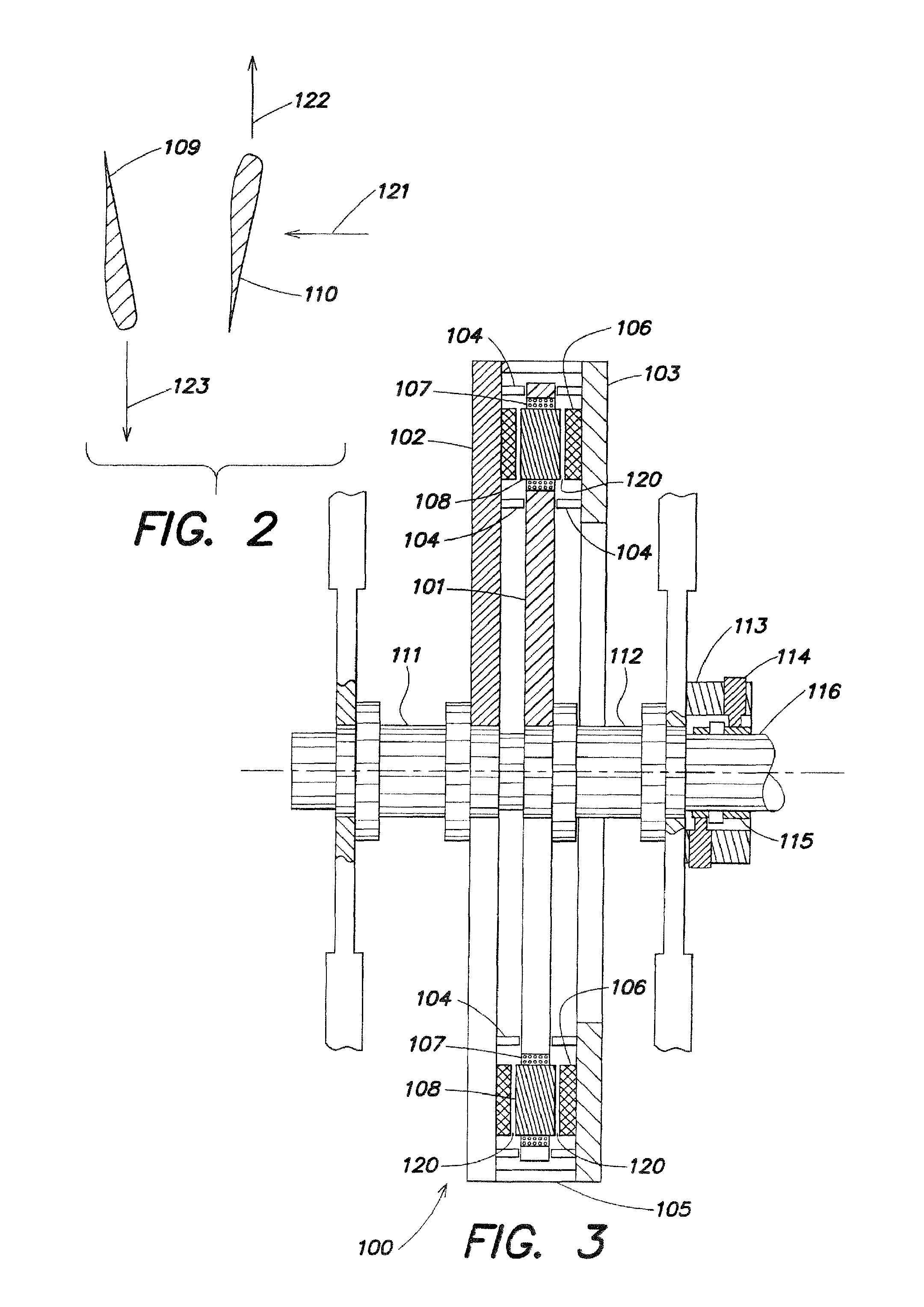Axial flux alternator with air gap maintaining arrangement
a technology of air gap and alternator, which is applied in the direction of motors, wind energy generation, dynamo-electric machines, etc., can solve the problems of lower rpm of wind turbines, energy losses, and higher weight and maintenance, and achieve high voltage dc
- Summary
- Abstract
- Description
- Claims
- Application Information
AI Technical Summary
Benefits of technology
Problems solved by technology
Method used
Image
Examples
Embodiment Construction
[0045]Referring to the accompanying drawings wherein like reference numerals refer to the same or similar elements, FIG. 1 shows a wind turbine arrangement including an axial flux alternator in accordance with the invention, designated generally as 100. As used herein, the term “alternator” is synonymous with and used interchangeably with a “generator”. The alternator 100, or alternator section, includes three disks, a coil disk 101, a main or primary magnetic disk 102 and a secondary magnetic disk 103. Supporting elements 105 mechanically connect the secondary magnetic disk 103 to the primary magnetic disk 102. Supporting elements 105 may be a plurality of rigid members distributed over the circumference of the primary and secondary disks 102, 103. Although three disks 101, 102, 103 are shown in FIG. 1, one of which is a coil disk and the other two of which are magnetic disks, at a minimum, the alternator section 100 includes one magnetic disk and one coil disk, see FIG. 11 describ...
PUM
 Login to View More
Login to View More Abstract
Description
Claims
Application Information
 Login to View More
Login to View More - R&D
- Intellectual Property
- Life Sciences
- Materials
- Tech Scout
- Unparalleled Data Quality
- Higher Quality Content
- 60% Fewer Hallucinations
Browse by: Latest US Patents, China's latest patents, Technical Efficacy Thesaurus, Application Domain, Technology Topic, Popular Technical Reports.
© 2025 PatSnap. All rights reserved.Legal|Privacy policy|Modern Slavery Act Transparency Statement|Sitemap|About US| Contact US: help@patsnap.com



